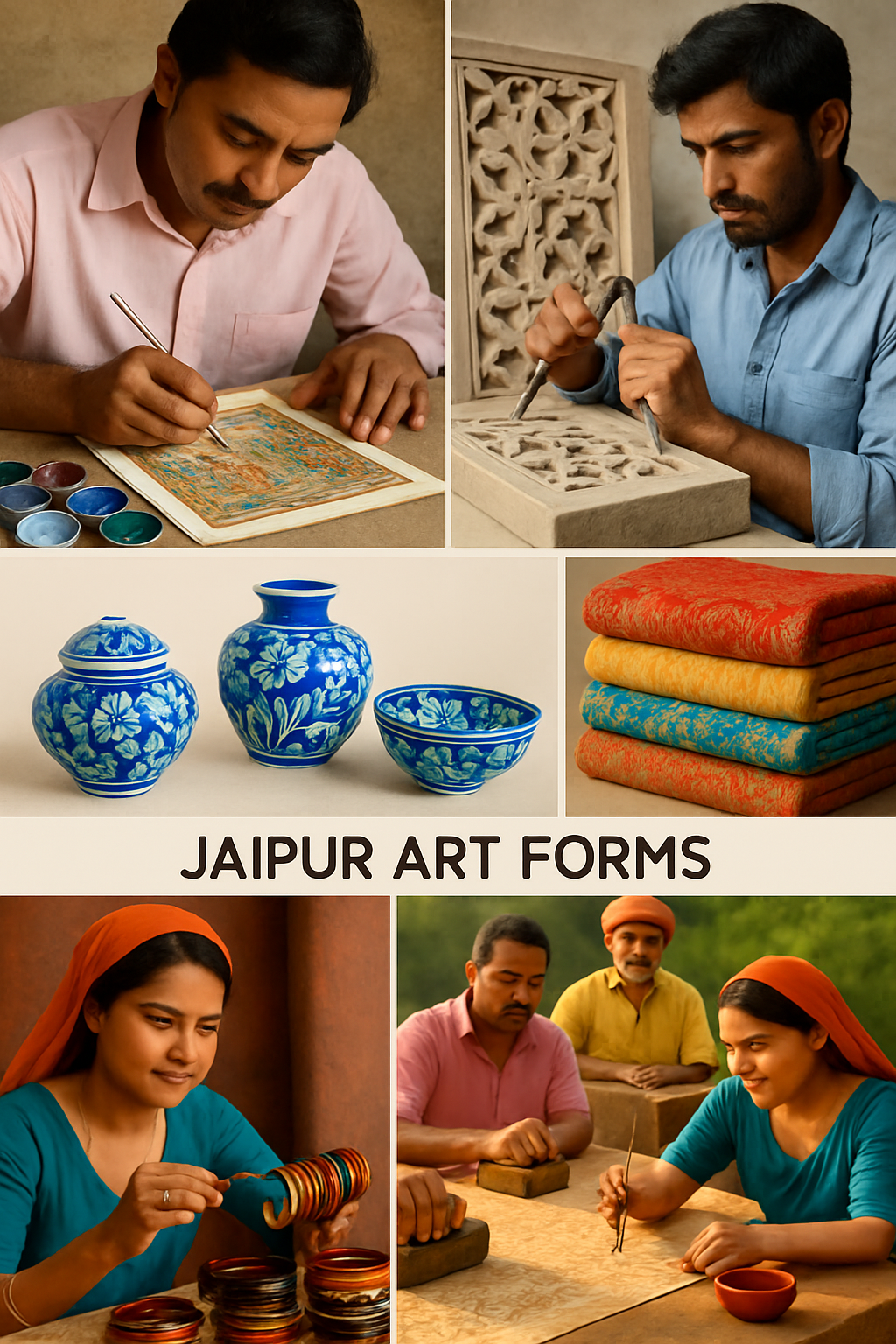Rajasthan’s capital, Jaipur, isn’t just the Pink City—it’s a living museum for India’s artistic excellence. Today, we journey beyond the celebrated block prints to explore the multifaceted world of Jaipuri art and the vibrant heritage that continues to inspire artists and admirers worldwide. Unlike earlier posts, this blog dives deep into lesser-known traditions and the unique ways Jaipur’s crafts embody both continuity and change.
A Mosaic of Masterpieces: Jaipuri Art Across Mediums
Jaipur’s artistic legacy is not monolithic. It is a dazzling spectrum that ranges from miniature paintings and stone carving to the shimmering elegance of blue pottery and the storied comfort of Jaipuri quilts (razai).
Miniature Paintings: Ancient Stories on Tiny Canvases
The Jaipur School of miniature painting stands apart for its meticulous brushwork, vivid storytelling, and a color palette that fuses Rajput valor with Mughal refinement. Emerging in the 18th century after the kingdom’s capital shifted from Amber to Jaipur, this art form mirrors the city’s cosmopolitan roots—a blend of local folk themes and Mughal precision, with later influences from European art and modernity.
Artists use the finest natural pigments and brushes fashioned from squirrel hair to bring tales of royal grandeur, mythology, and festivals alive on ivory, silk, and even palace walls. These paintings are easily recognized by their delicate facial features, accentuated jewelry, and ornate backgrounds, often depicting the beauty and agency of Rajasthani women.
Blue Pottery: The Science and Beauty of Clay
Jaipur’s blue pottery is a dazzling example of innovation. Brought from Persia and refined locally, it uses an unusual combination of quartz, glass, and natural gum instead of clay. The result: semi-translucent, vivid blue wares featuring intricate floral, animal, and geometric patterns not found elsewhere. The art flourished under royal patronage, and today, Jaipur leads India as its blue pottery capital.
Textile Wonders Beyond Block Prints
While Sanganeri and Bagru block prints are iconic, Jaipur’s textile heritage is even richer. Crafts like Bandhani (tie-and-dye), famed for its dotted motifs, and intricate Zari and Zardozi (gold and silver thread embroidery) have roots that stretch back centuries. Each technique is a living testament to Jaipur’s diverse communities, from Marwaris to Mughals, all leaving their creative imprint.
Of special note are Jaipuri quilts, renowned for their lightness, warmth, and traditional prints. Crafted through labor-intensive processes like cotton carding and hand-block printing, each quilt is both a utilitarian object and a work of art.
Stone Carving and Lac Bangles: Hard Craft, Soft Touch
From the intricate latticework on palace facades to lifelike marble statues and jewelry boxes, Jaipur’s stone craftsmen shape local sandstone and marble into architectural and household wonders. Equally emblematic are lac bangles—heralds of marital bliss, adorned with gold leaf and vibrant colors, sold in bustling bazaars as wearable heritage.
The Modern Renaissance and Artisan Empowerment
What makes Jaipur’s art truly dynamic is its ability to reinvent itself. Contemporary artists partner with traditional families, merging legacy with fresh narratives and global sensibilities. Artisan clusters, NGOs, and design schools are ensuring these crafts remain economically viable and culturally relevant—even as mass production, changing tastes, and global trends pose new challenges.
The Pink City’s crafts are more than souvenirs; they are stories of adaptation and resilience, wrapped in beauty and ingenuity.
Experience the living legacy of Jaipuri art—not just as a product but as a story woven, carved, and painted into the very fabric of Rajasthan. Next time you touch a piece from Jaipur, know you are holding centuries of tradition and the creative spirit of today’s artisans.



